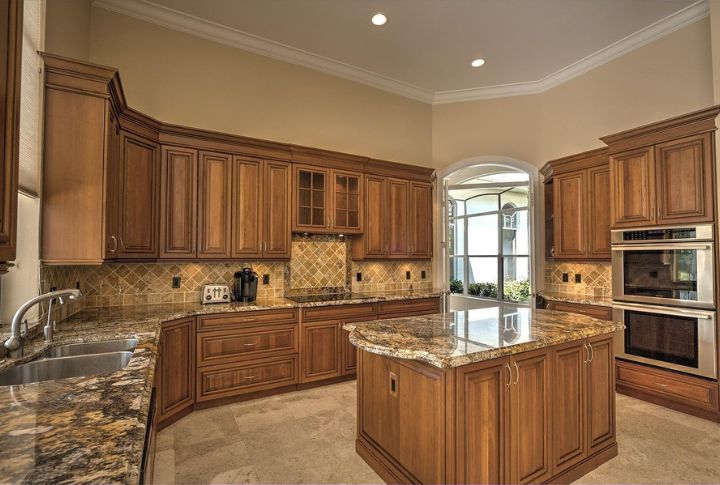
That dreamy countertop might look flawless under showroom lights, but wait until reality sets in—scratches, stains, and regrets included. Trends come and go, but your kitchen’s wear and tear doesn’t. Before you commit, peek at the styles that can quietly sabotage your remodel.
Concrete Countertops

Don’t let their industrial charm fool you. As concrete countertops are prone to hairline cracks over time due to natural settling, frequent sealing is necessary to prevent stains. They also need 28 days to fully cure, and insurance companies often ignore them when evaluating kitchen upgrades.
Butcher Block

Wood’s porous nature makes butcher block a bacterial risk, like E. coli, if not sanitized thoroughly. In fact, regular oiling, at least every three months, is mandatory. Surprisingly, even lemon juice can leave marks, and dishwashers nearby cause warping due to exposure to heat and moisture.
Glossy White Quartz

Bright quartz countertops may look sleek, but UV rays can cause yellowing, which is mostly not covered under warranty. They’re also vulnerable to irreversible heat damage from hot pots. Despite outdoor marketing claims, many quartz types aren’t even UV-safe, making them a risky pick for sunlit spaces.
Laminate

Laminate counters burn easily under hot pans and are scratched with knives. The seams often show, and edges can peel over time. Built from layers of paper and plastic, they rarely boost resale value and won’t withstand high use or exposure to gourmet kitchens.
Marble

Marble’s beauty comes at a cost. Acidic foods can etch within minutes, and liquids like red wine or coffee stain quickly. Even water can leave rings. Professional resurfacing often costs over $1,000, making it one of the higher-maintenance materials on the market.
Stainless Steel

It may scream “modern,” but stainless steel scratches easily from cookware and scouring pads. Fingerprints and water spots are constantly visible. Originally used in morgues, the material also reflects sound, meaning clanging dishes echo more loudly and create an extra level of kitchen noise that many homeowners don’t anticipate.
Tile Countertops

Tile counters come with cleaning nightmares—grout lines attract stains and even ants. If the tilework isn’t done perfectly, cracks will follow. Rolling dough becomes a chore thanks to uneven edges. Maintenance is high, and the look feels outdated in many modern kitchens.
Epoxy

Installing epoxy countertops is far from simple—timing, safety gear, and heat control are critical. Surface scratches and yellowing happen over time. Blowtorches are used to eliminate bubbles, but any mistake during application can trap dust, lint, or even hair permanently under the surface.
Copper

Copper countertops oxidize quickly, forming green and brown splotches unless frequently polished. Acidic foods may leave fingerprint-shaped stains. While ketchup can clean the surface, it can also damage the finish. The constant upkeep makes it an impractical option for most modern households.
Granite With Busy Patterns

Highly patterned granite may overwhelm minimalist kitchens and clash with modern aesthetics. Darker tones can further shrink visual space, making kitchens feel smaller. Though durable, granite still needs sealing. Once a 2000s status symbol, these loud patterns now feel dated and harder to coordinate.

